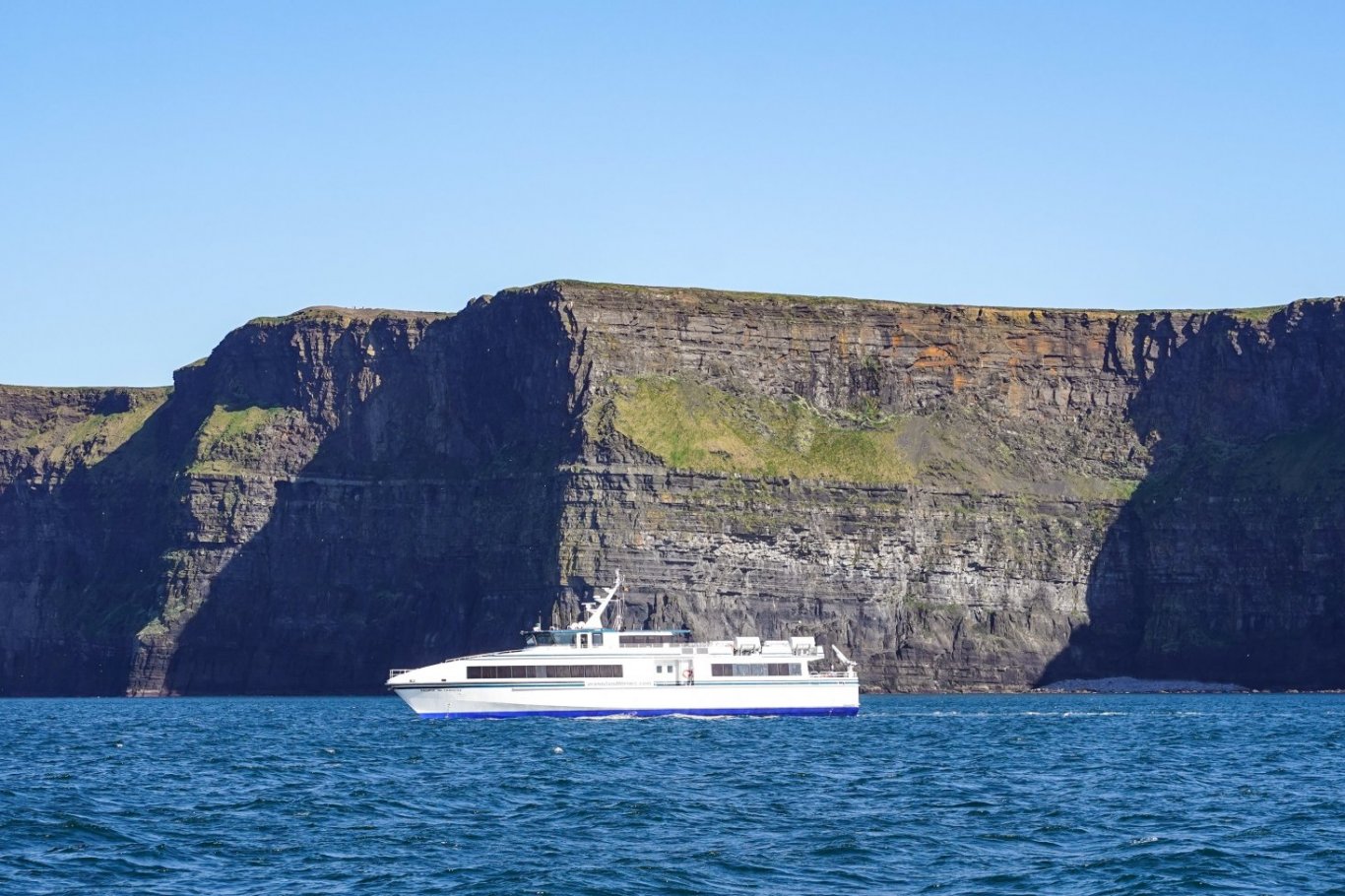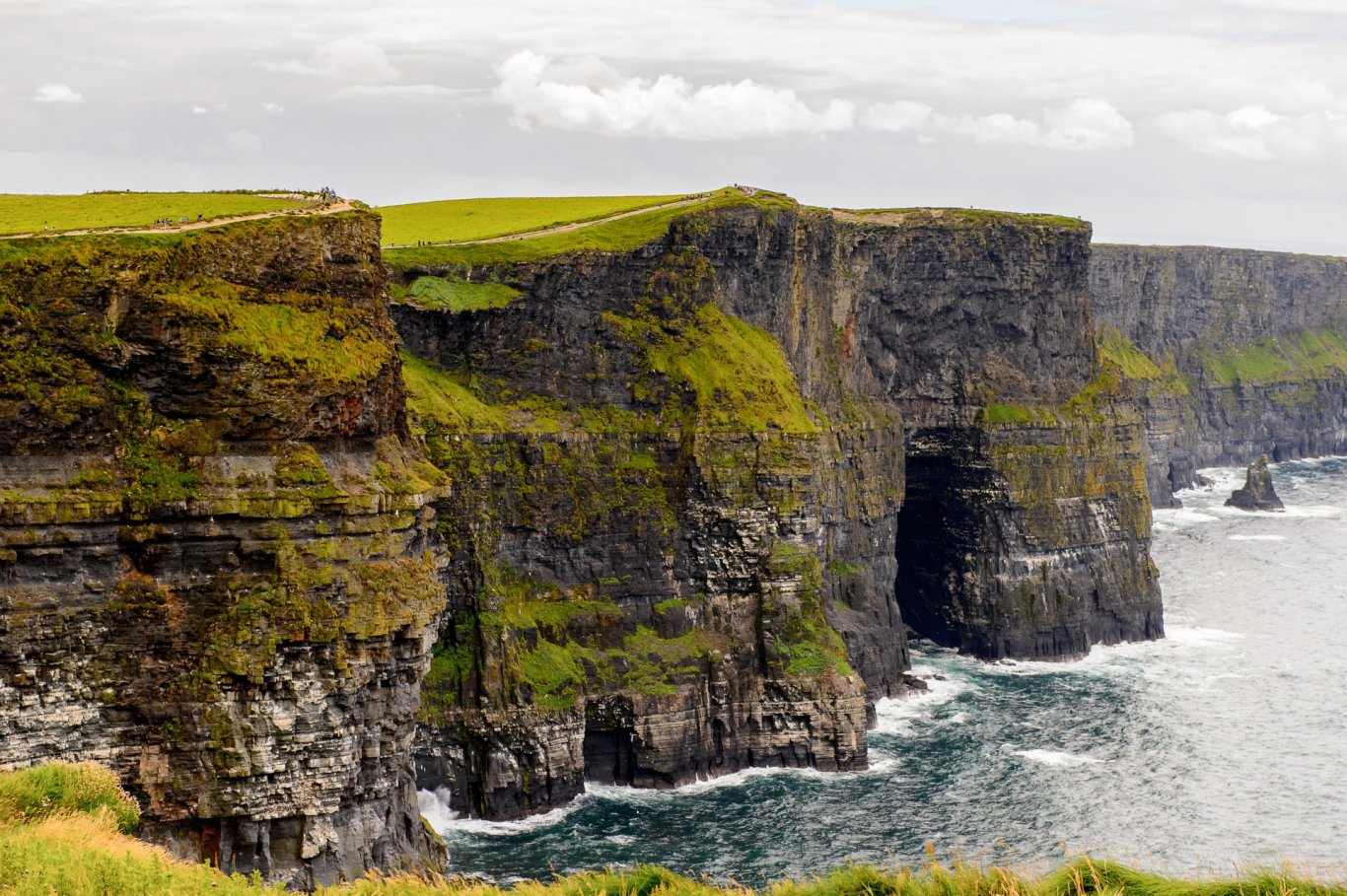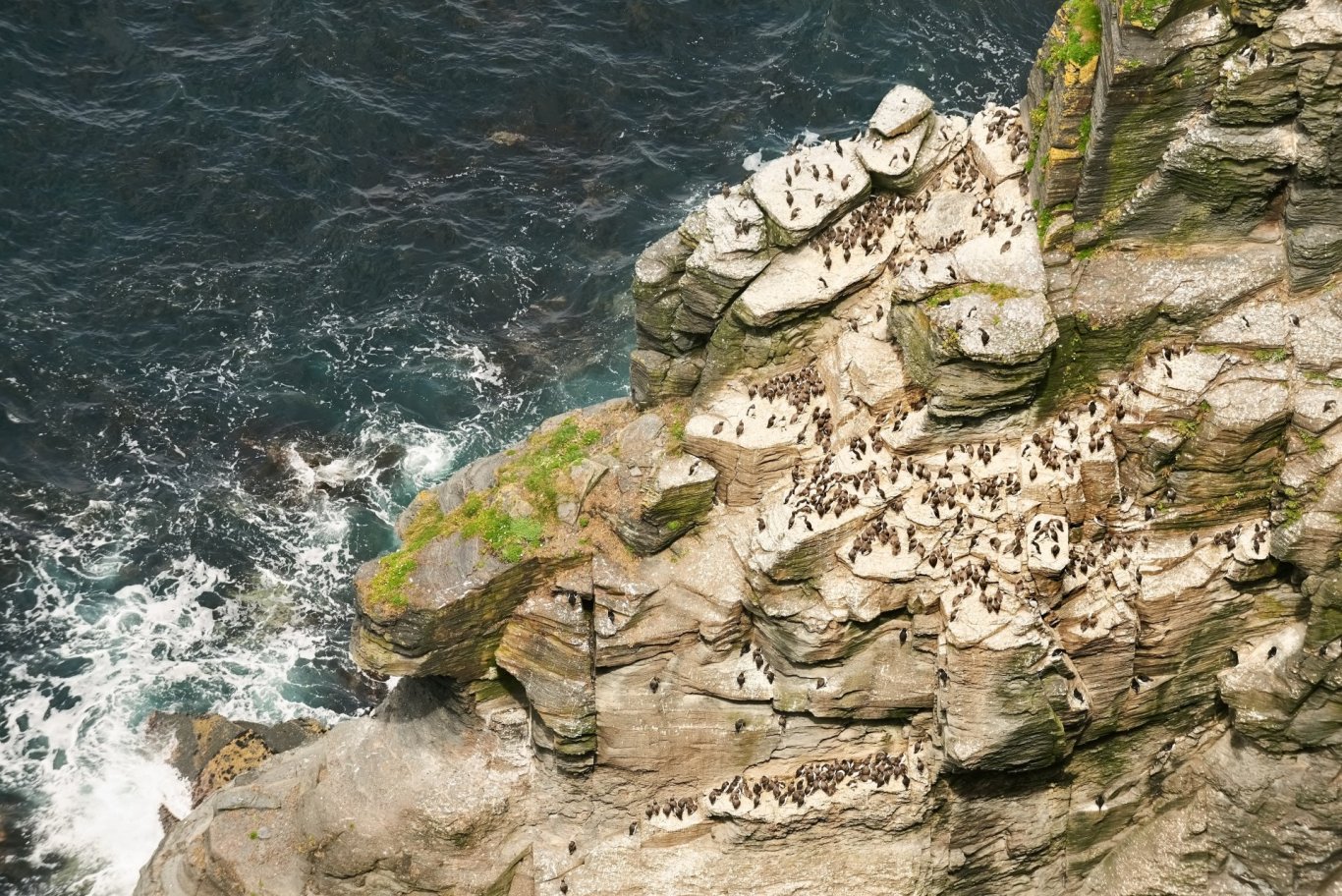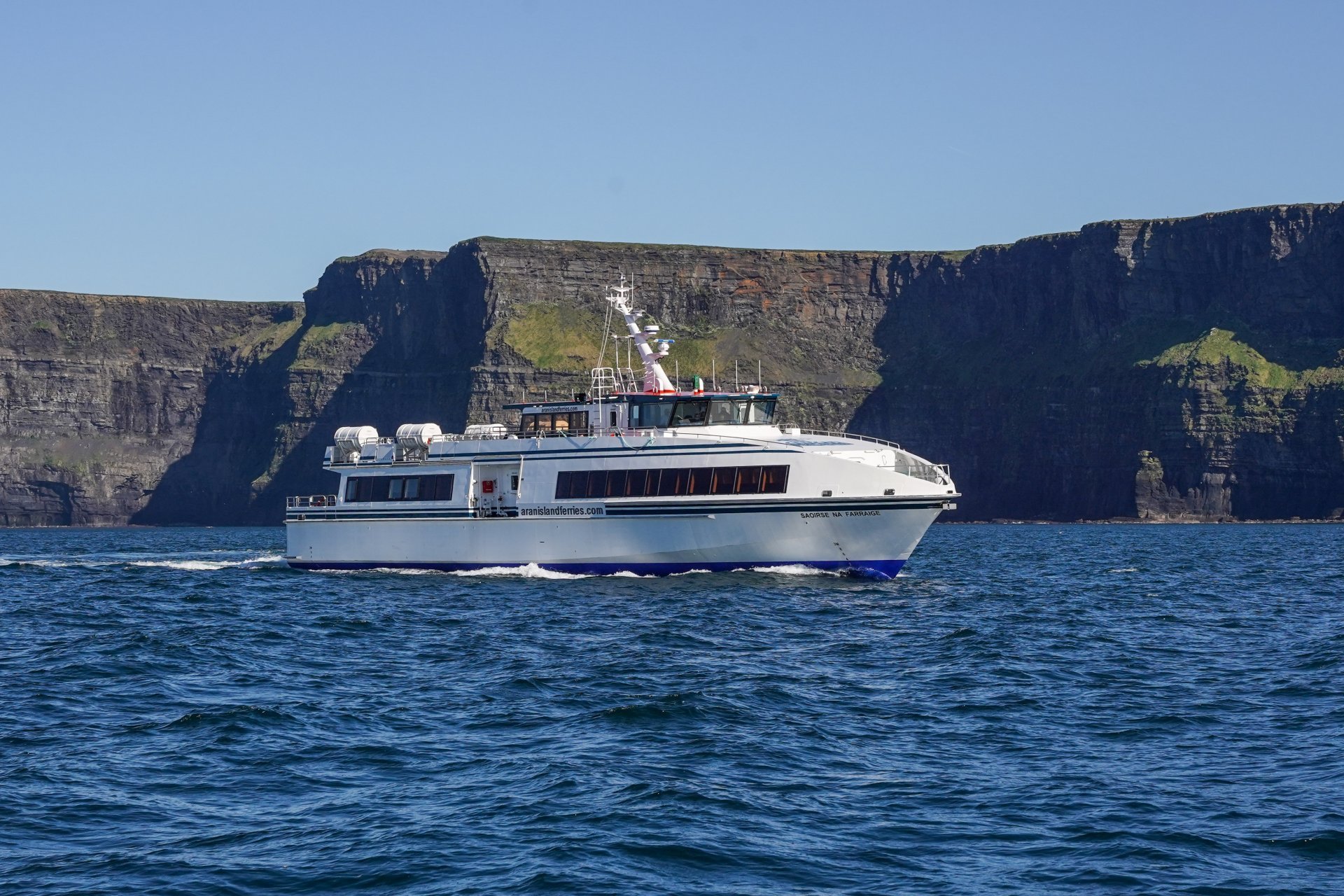You can experience Galway, the Aran Islands and Cliffs of Moher in one day on our ferry, as part of our Aran Islands and Cliffs of Moher day trip from Galway City
. Passengers will see the majestic Cliffs of Moher from the water on the return journey to Galway City.Fun Facts about the Cliffs of Moher
1. Size: Measuring around 8 kilometres or 5 miles long and towering up to 200 meters, or 700 feet, high, the Cliffs of Moher are at least twice the height of famous landmarks such as the Statue of Liberty and the Elizabeth Tower, which houses Big Ben. This magnificent coastline was formed over 300 million years ago.

2. Movies filmed at the Cliffs of Moher: For any Harry Potter fans, the sea cave you'll spot on our ferry as we cruise along the Cliffs was featured in the sixth movie Harry Potter and the Half-Blood Prince. Standing on a sea stack on a dark cloudy day, Dumbledore and Harry looked towards this cave which Voldemort used to hide one of his Horcruxes. For those of you who are fans of the 1987 cult classic the Princess Bride, you may recognise the cliffs as the 'Cliffs of Insanity'. The Cliffs of Moher featured in Leap Year, Ryan's Daughter and The Guns of Navarone.

3. Signal Tower: Two hundred years ago, the British viewed the stunning scenery of Ireland's western coastline as an easy access point for their dreaded enemy, Napoleon. They feared he would invade Britain via Ireland, so to avoid this, the British Army built hundreds of defensive towers along our western coast. The silhouette of one of these towers was a signal tower, built in 1808 to communicate messages with passing ships and other towers along the coast. The ruins of the signal tower stand in an area commonly referred to as the Hag’s Head.
4. How the Cliffs of Moher were Formed: These colossal cliffs were created by layers of mud, silt and sand that were compacted and turned into solid rock over millennia. The different compacted layers can be seen in the different coloured bands that stretch horizontally across the cliffs. The lighter coloured rock is Namurian Sandstone and the darker coloured bands are siltstone and shale. Each line of rock is a sort of time capsule, containing fossils of plants, insects and marine animals that were trapped between the layers of sediment millions of years ago.
5. Why are they called the Cliffs of Moher? Due to its sedimentary makeup of the Cliffs, the stone breaks into large sheets or flags, which are ideal for building materials. For many years humans have quarried this rock and used it to build houses, decorate fireplaces, and even tile roofs. Perhaps the conveniently breakable stone was used over a thousand years ago to build Ó Ruaín’s fort here on the cliffs. This fort which has now been destroyed, was known in Irish as An Mothar Uí Ruaín meaning ‘the ruin of Ó Ruaín’. Over the centuries, An Mothar Uí Ruaín was shortened to An Mothar and soon became known in English as the Cliffs of Moher.
6. Marine Life at the Cliffs of Moher: The Cliffs of Moher are one of Ireland’s most important seabird habitats, with the largest kittiwake and razorbill colonies in the country, along with fulmar, herring and black-backed gulls, shags, guillemots, the peregrine falcon – the fastest bird on the planet that can reach 240km/h, and, perhaps the most popular of all, the Atlantic puffin. They typically spend the autumn and winter out in the wild open ocean, with dull coloured beaks & feet. As spring approaches their bright colours return and they head back to the same burrows they left the previous autumn, to reunite with their mates. They lay just a single egg in early summer, which parents take turns incubating until it hatches, then they take turns provisioning the puffling chick until it fledges in late summer. As autumn begins, the puffin families separate again, heading back out on their winter migration, some heading as far as the eastern coast of Canada. Puffin numbers are increasing at the Cliffs of Moher, however their population in other parts of Ireland and mainland Europe is unfortunately dwindling fast, and these charismatic birds are now on the red list of species facing possible extinction in the near future, threats include over-fishing and climate change.


